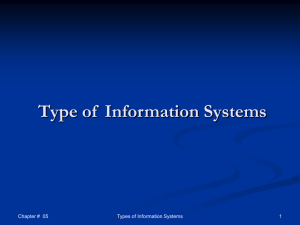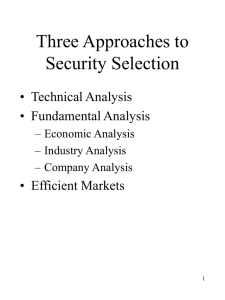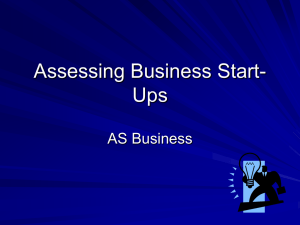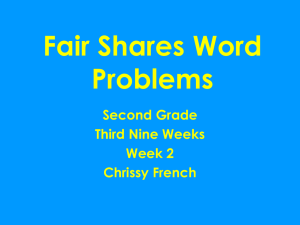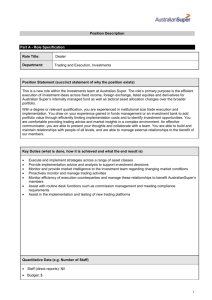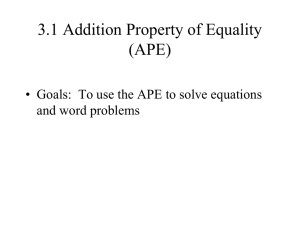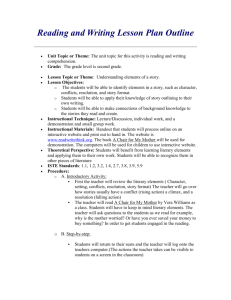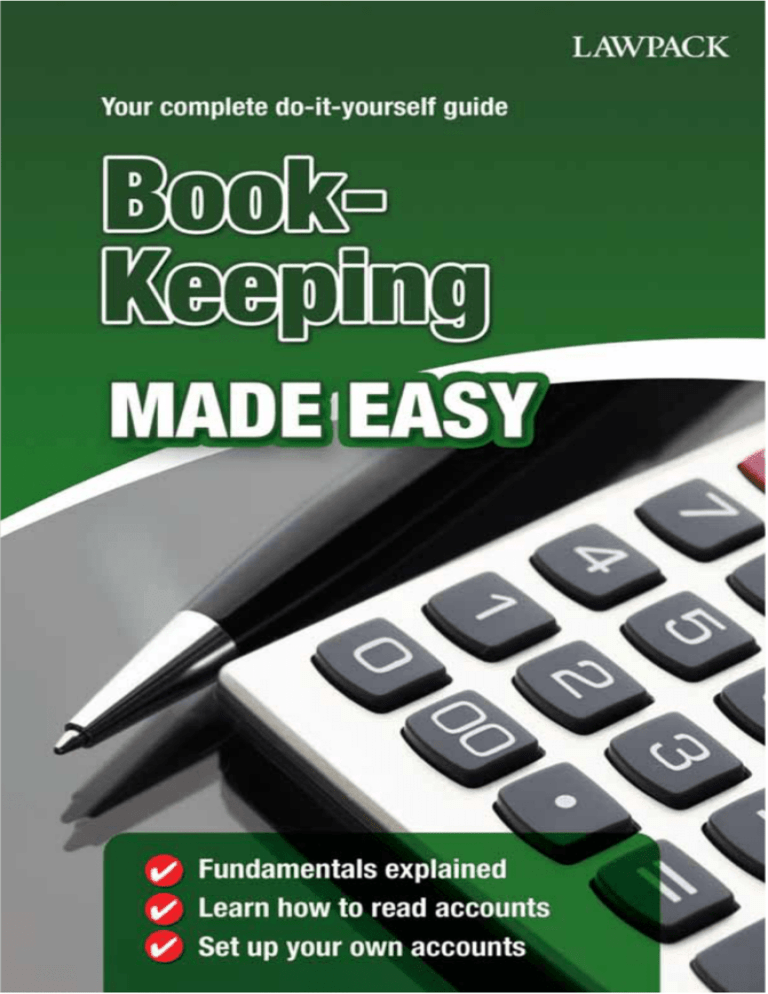
This is an excerpt from Lawpack’s guide Book-Keeping Made Easy.
To find out the secrets of good book-keeping/accounting and a lower
tax bill, click here.
Book-Keeping Made Easy
by Roy Hedges
1st edition 2002
Reprinted 2004
2nd edition 2005
Reprinted 2005
3rd edition 2006
Reprinted 2007
Reprinted 2008
Reprinted 2009
Reprinted 2010
4th edition 2010, 5th edition 2012
© 2012 Lawpack Publishing Limited
Lawpack Publishing Limited
76–89 Alscot Road
London SE1 3AW
www.lawpack.co.uk
The right of Roy Hedges to be identified as the author of this work has been asserted
by him in accordance with the Copyright, Designs and Patents Act 1988.
This book has been updated by Sharon Calley and Rachael Holmes of H.M.
Williams Chartered Accountants.
All rights reserved.
Printed in Great Britain
ISBN: 978-1-907765-94-0
Exclusion of Liability and Disclaimer
While every effort has been made to ensure that this Lawpack publication provides
accurate and expert guidance, it is impossible to predict all the circumstances in which it
may be used. Accordingly, neither the publisher, author, retailer, nor any other suppliers
shall be liable to any person or entity with respect to any loss or damage caused or alleged
to be caused by the information contained in or omitted from this Lawpack publication.
For convenience (and for no other reason) ‘him’, ‘he’ and ‘his’ have been used throughout
and should be read to include ‘her’, ‘she’ and ‘her’.
Contents
Introduction
v
1 Book-keeping & accounting explained
Different forms of accounting made clear
Who keeps books and why?
Assets, liabilities and capital
Business transactions clarified
1
4
5
8
9
2 Keeping records for the small business
The cash book
The sales book
The purchase book
Dealing with petty cash
The petty cash book
Using credit cards for business payments
11
12
14
17
20
21
22
3 Reconciliation & VAT
Business bank accounts
Reconciling your accounts
What to do at the end of year
Self-assessment
Value Added Tax
23
23
24
27
28
29
4 Accounting for growing businesses
Accounts
Ledgers
Daybooks
Managing original documents
Purchase and sales ledgers
35
36
40
41
43
44
5 Final accounts
Trial balances
49
49
iv | Book-Keeping Made Easy
The Balance Sheet
Stock valuation
Trading and Manufacturing Accounts
Profit and Loss Accounts
Adjustments to the accounts
Accounts of limited companies
Year on year consistency in accounts
50
52
53
55
56
59
60
6 Budgets & cash flow forecasts
Budgets and cash flow forecasting
Costing and pricing
Computerised accounting
63
63
66
67
7 Payroll
Payroll calculations and book-keeping
Other items
Tips for running a payroll system
71
72
74
75
8 Putting accounting data to work
Monthly financial reports
Statistical control figures and their uses
Efficiency ratios
Liquidity ratios
Profitability ratios
Other useful ratios
Purchasing a business
Ledger entries for merging and buying a business
77
78
79
80
81
82
83
85
86
9 Partnership accounts & tax cutting tips
Partnership accounts
Source and application of funds
Tips for cutting tax and avoiding an HMRC probe
89
89
92
94
Glossary
Index
97
99
Introduction
Most people who are in business for the first time wrongly believe that
keeping a set of books is an unnecessary and unpleasant chore that they
have to do just for the benefit of the taxman. It’s true that HM Revenue &
Customs will use the accounts produced from your business records to
extract as much tax as they can. On the other hand, a skilled accountant
will be able to use them to minimise your tax liability.
Keeping an accurate detail of all your business transactions should never
be classed as a job to be done only when you can fit it into your busy
schedule. Your business paperwork needs to be updated daily because it’s
the gauge of the financial health of your business. It’s no good moaning
that time could be more profitably spent making sales, because if you sell
goods or services at a loss due to poor accounting procedures, what is the
point of being in business? Did you know that more businesses fail in their
first year or two because of insufficient financial control than for any other
reason?
What makes this book different from the many others published over the
years on book-keeping? It’s because it’s written primarily for the
entrepreneur. Whilst students and those entering book-keeping and
accountancy careers for the first time may find it of interest, it’s not a
textbook. It’s really aimed at small business owners. Apart from showing
how to set up accounting records and explaining the jargon used by those
in the profession, it also demonstrates the practical uses to which a goahead businessperson can put the information stored within the accounts
of a business.
Since the financial records of an owner-managed enterprise can differ
greatly from those of medium-sized and larger businesses, chapters 2 and
vi | Book-Keeping Made Easy
3 relate to the book-keeping requirements of a sole proprietor, for
example, a self-employed tradesman or small shopkeeper, in fact anyone
mainly trading in cash and not credit transactions. If you fall into this
category, you will have little use for double entry book-keeping, and piles
of ledgers. What you really need is an easy-to-operate, no-frills system and
that’s exactly what you get in these chapters. Nevertheless, it’s important
not to neglect some of the later chapters, as these will be invaluable to you
as a source of reference; I refer to the sections on Balance Sheets, Profit and
Loss Accounts, computerised accounting and payroll (even if you are only
employing one member of staff).
At the end of each fiscal year, putting the final accounts together will be a
lot easier for your accountant if he is presented with a full set of well-kept
books, instead of just being given piles of invoices and receipts to sort out.
Apart from ensuring you are not paying too much tax, his fees will be
much lower.
Those of you who are on the threshold of an exciting new business
adventure may be interested in reading my other book in Lawpack’s Made
Easy series: Running Your Own Business Made Easy. It draws on personal
experience to help you avoid the pitfalls I encountered when embarking
on the same path you are now taking.
Finally, I would like to thank the many firms and individuals without
whose help I would have been unable to write this book.
Roy Hedges
CHAPTER 5
Final accounts
What you’ll find in this chapter
✔
✔
✔
✔
✔
✔
✔
✔
Trial balances
The Balance Sheet
Stock valuation
Trading and Manufacturing Accounts
Profit and Loss Accounts
Adjustments to the accounts
Accounts of limited companies
Year on year consistency in accounts
Trial balances
Before preparing the Profit and Loss Account and the Balance Sheet, your
book-keeper will first draw up a trial balance. This is a list of all the
accounts showing their closing balances. The total debits should equal the
closing credits. If not, a mistake has been made and must be found. Trial
balances are not only done at the end of each year, but can be taken at any
time. If your accounts are computerised, a trial balance can be produced at
the click of a button.
Every book-keeper should be able to account to trial balance; but at the
year-end your acountant needs to step in and finalise your books. Trying
to get anyone else to do them is a false economy. Having said that, it’s
important that you understand what is involved in their preparation and
how the information stored within them can be used.
50 | Book-Keeping Made Easy
A trial balance does exactly what its name implies – it confirms that the
totals of the debit and credit entries match each other.
By doing a trial balance on a monthly basis, any slip made by your bookkeeper in the month’s work can be quickly spotted and rectified. Only
doing it once a year could mean hours spent wading through months of
paperwork.
The Balance Sheet
The Balance Sheet is just a reorganisation of the trial balance within a
prescribed format. The Profit and Loss Account is merely a detailed
breakdown of the profits figure shown below under ‘Capital’.
A Balance Sheet is simply a list or statement of what you or the business
own and what is owed by you at the end of each year.
The aim is to make sure that your assets are equal to or in excess of your
liabilities. The Balance Sheet is always calculated on a single date each year.
Therefore, the Balance Sheet basically shows you how your business is
financed. Is it depending on bank loans or is it making a profit? Above all
else, it will let you know if the business can pay its bills as they become due
in the short term.
The trial balance we produced in the last chapter looked like this:
£
Equipment
Cash
Stock
Debtors
Cost of sales
Rent
Totals
2,500
2,500
2,250
5,000
2,000
750
15,000
£
Capital
Sales
10,000
5,000
15,000
We noted at the beginning that the debit side shows what the business
owns and the credit side what it owes.
Final accounts | 51
Now does the business owe the owner £15,000? Well, let us take a look at
the debit side which records what the company owns.
Which of these debits are assets?
The equipment is a fixed asset which will be used to generate more sales.
Stock and debtors are current assets which it’s hoped will be turned to cash
as soon as possible.
And then there is the cash itself.
The rent and the cost of sales figures are clearly not assets that the
company owns but expenses that have to be deducted from the sales
revenue to record the profit for the period.
The trial balance then looks like this:
£
Equipment
Cash
Stock
Debtors
Totals
2,500
2,500
2,250
5,000
12,250
£
Capital
Sales
Cost of sales
Rent
10,000
5,000
-2,000
-750
12,250
Or by showing the profit calculation on the face of the trial balance it looks
like this:
£
Equipment
Cash
Stock
Debtors
Totals
2,500
2,500
2,250
5,000
12,250
£
Capital
Sales
Cost of sales
Rent
Profit
10,000
5,000
-2,000
-750
2,250
12,250
The calculation of the profit (sales less cost of sales less rent) is the Profit
and Loss account for the period, and it only appears on the face of the
Balance Sheet as a single figure:
52 | Book-Keeping Made Easy
Profit and Loss Account
£
Sales
Cost of sales
Rent
Profit
5,000
-2,000
-750
2,250
Balance Sheet
£
Equipment
Cash
Stock
Debtors
Totals
2,500
2,500
2,250
5,000
12,250
£
Capital
Profit
10,000
2,250
12,250
Stock valuation
Valuing stock correctly at the end of your trading year is important since
it will reflect in your gross profits. Overvaluing it could result in you
paying too much tax. Undervaluing it could turn a profit into a loss, and
this will reflect in your purchase price should you decide to sell the
business. An incorrect valuation could be looked upon as fraudulent, so
care must be exercised at all times.
When valuing stock, always price it at its cost price, reducing the value
where deterioration has occurred.
In most businesses, it’s advisable to keep a running total of stock in hand.
This means every year you start off with an opening number of items in
stock. During the course of the year this stock will be replenished; at the
same time items of stock will either be used in your manufacturing process
or sold. Stock items received will be added to your total, with those used
or sold deducted, ensuring you have a running total of stock at all times.
A computerised system will add and deduct these items automatically.
Final accounts | 53
One advantage of completing an annual stocktake is that it will highlight
slow-moving items; a stocktaking sale may remove these objects off your
shelves whilst making the stocktake easier. A simple calculation to assess
the value of your stock is:
Items of stock at start = 4,000, plus number purchased 8,000 = 12,000 less
items used or sold 11,000 = closing stock 1,000 items.
Say the cost of these items is £10 each, but because 200 are damaged their
value is reduced to £7.50 each, the closing value of stock is:
800 units @ £10 each = £8,000
200 units @ £7.50 each = £1,500
The gross value of your stock would be £9,500.
It’s this last figure that is transferred to your Trading Account. As all items
of stock are rotated, stock purchased first is sold before more recently
bought items. The cost price of your calculation is taken from the latest
invoice received from the supplier.
Trading and Manufacturing Accounts
Before attempting the Profit and Loss Account, there is one other small
account to draw up. In a trading firm, one that buys and sells finished
products, this account is called the Trading Account and in a
manufacturing concern, it’s called the Manufacturing Account. The same
account in a professional firm is referred to as the Revenue Account.
A trial balance is taken from
your books and ledgers
Profit and Loss
Account created
Trading or Manufacturing
Accounts are drawn up
Balance Sheet
54 | Book-Keeping Made Easy
Your path from Trial Balance to Balance Sheet is like the illustration above.
Whatever it’s called, the aim of this account is to establish the gross profit
of a going concern, and in truth they really all are revenue accounts.
Taking these one at a time, we shall begin with the Trading Account. This
account defines the turnover of the business and its gross profit or loss;
this final figure is then transferred to the Profit and Loss Account. It’s in
the Profit and Loss Account that the net profit or loss will be calculated.
An average Trading Account will show the following entries:
Trading Account
For the year ending 31 December 20XX
£
Opening
stock
£
15,500
£
£
Sales
95,000
Purchases
39,000
Less returns
-3,500
Less returns
-1,450
Net turnover
91,500
Net purchases
37,550
Total stock
53,050
Less closing
stock
-10,460
Cost of
stock sold
42,590
Gross profit
Transferred to
P & L a/c.
48,910
91,500
91,500
Of course, the purchase and sales returns accounts will be closed off and
the totals transferred to the Trading Account.
The Manufacturing Accounts will be comparable to those pictured above,
but with one main difference. Manufacturers don’t buy in goods for resale;
Final accounts | 55
they purchase raw materials to make them into finished goods. Therefore,
the stock of a manufacturer falls into three categories:
•
Stock of raw materials
•
Work in progress or partly finished products
•
Stock of finished goods
Like all closing stocks, these three items will appear in the Balance Sheet as
assets of the business. The Manufacturing Account will be in two parts: the
first will be the same as a Trading Account but with the stock classified
differently, and below this will be a cost of manufactured goods section;
this will include items such as general overheads. These general expenses
will include items such as power, rent, rates and wages among others.
Profit and Loss Accounts
When closing off the balances at the time of the trial balance, any losses
due to non-payment will be debit balances and these are now transferred
to a Bad Debt Account. A Bad Debt Account will list every debt that is
considered or proven to be unrecoverable during the course of the year
under review.
Any losses during your trading year due to damaged or stolen stock will be
reflected in the gross profit figure arrived at in the Trading Account.
Bad Debt Account
£
£
8 Mar
Mark Cash
150
21 Nov
P. Sterling
450
600
31 Dec
Transfer to Profit
& Loss a/c.
600
600
In fact, a Profit and Loss Account is no more than a continuation of your
Trading Account. Many firms do, in fact, put these two together and produce
a Trading and Profit & Loss Account. To arrive at a net profit, the expenses
will be listed in your Profit and Loss Account. See the illustration below.
56 | Book-Keeping Made Easy
Profit and Loss Account
For the year ending 31 December 20XX
£
Bad debts
Wages
Gross profit
(transferred from
3,350
Trading a/c.)
9,800
Commission paid
2,100
Rent & rates
Printing
600
£
48,910
250
Total expenses
16,100
Net profit
32,810
48,910
48,910
As we saw earlier, the net profit sum shown in this illustration will now be
transferred to the Capital Account. A point to note in respect of your final
accounts is that any figure or total that represents a loss is often placed
within brackets, thus allowing it to be easily recognisable. At this stage of
accounting, the double entry system concludes. All that remains now is for
the Balance Sheet to be prepared, and any necessary adjustments to the
final accounts to be made.
In this guide there have been a lot of accounts omitted, simply because this
is not a book targeted to students where an incredible amount of detailed
explanation is required, but to the businessperson. After the next sections,
the subsequent chapters embrace wages, computerisation and most of all
what you can learn from your accounts, and the uses to which they can be
put. This in my mind is far more important for today’s entrepreneur than
learning about the entries your book-keeper will be doing on your behalf
anyway. However, it’s necessary to provide a basic understanding of what
is required to enable the remaining chapters to make sense.
Adjustments to the accounts
The purpose of adjusting the final accounts is to generate an accurate set
Final accounts | 57
of accounts and Balance Sheet for the period under examination. One of
the main instances where adjustments have to be made is when dealing
with payments made or received in advance. Payments nearly always made
in advance include insurance premiums, rent and rates. Taking 31
December as your year-end, if you paid three months’ rent on the first of
December, only one month of that rent would be treated as an expense in
calculating the current year’s profit. So a rental charge of say £3,000 per
quarter means the accounts would need to be adjusted to show only
£1,000 in the current year’s Profit and Loss Account, with the rest held
over in the Balance Sheet to the next accounting period. In this instance, if
you took a look at your rent account it will appear as below.
Rent Account
£
1 Dec Rent paid
3,000
£
31 Dec
Profit & Loss a/c.
Balance c/fwd
3,000
1 Jan Balance b/fwd
1,000
2,000
3,000
2,000
Payments made in advance to your firm for services not yet rendered
cannot be treated as profits, but they will be carried forward to the next
trading year as liabilities. The reasoning behind this is that if you are
unable for any reason to fulfil your obligations, the money will be returned
to your customer.
Another example of an adjustment to your final accounts may be accrued
expenses. This usually applies to wages, or commissions due to
salespeople. If wages are paid weekly or fortnightly, they may span a yearend. The Wages Account will have entries similar to the above Rent
Account, but reversed. The portion of the wages due but not yet paid will
therefore show as a current liability in the Balance Sheet.
In a small business, it’s not really necessary to make adjustments for
small items such as telephone bills. HM Revenue & Customs realise the
problems this can cause.
58 | Book-Keeping Made Easy
There are many other adjustments that may be made to the final accounts
of a business; provision for bad debts is one, depreciation of assets is
another and so is goodwill. Let’s take these one at a time. In providing for
possible bad debts, if it’s usual in your trade for, say, five per cent of debts
to be not collectable, the sum of £437.50 will be deducted from the
debtor’s total under current assets in the Balance Sheet. Simply because a
debt is being transferred to a Bad Debt Account doesn’t mean that you
have to give up on it. The debt must be pursued until all avenues of
collection have been exhausted.
Most other assets of a business, such as machinery (but not for bricks and
mortar), wear out over a given period. Depreciation reduces the value of
the asset over its normal life span. Therefore it can be said that
depreciation reduces the profits available for use by the owner. However, it
does leave an undistributed wealth in the firm because profit is normally
turned into cash, and depreciation is a non-cash transaction, so it’s easy to
have more cash than profit – for a while! A prudent manager will invest
these funds outside the business to replace the asset when the time comes.
Otherwise, the undistributed funds can be frittered away, and the business
will have to resort to borrowing to replace worn out machinery.
In respect of leases, should the one you purchase have five years to run,
simply deduct a fifth from its purchase price each year.
‘Goodwill’ is the valuation placed on a going concern over and above the
value of its assets. It’s a sum that is paid by a buyer of a business to the vendor
in expectation of the profits to be made that are directly from the hard work
of the previous owner. Goodwill is an intangible asset, and it relates to the
relationship the former owner built up with the clientele. The customers of
the vendor will continue to use the business because of its reputation of fair
dealing. As it’s not an asset that can be touched, a new owner will probably
write this asset off over a period of between three to five years.
Assets of a limited company must be shown in the Balance Sheet at the
original cost, less depreciation to date, and quoted at its net value.
Valuing the goodwill of a business is very difficult indeed; its value is only
what a third party is prepared to pay for the customer loyalty that has been
built up over the years, through the vendor’s hard and honest work.
Final accounts | 59
Accounts of limited companies
The accounts of limited companies differ from sole traders’ in a number
of ways: first there is the distribution of capital. Investors who become
shareholders ‘subscribe’ the capital of the business, which is then used to
purchase assets for the company’s use and to generally allow it to run its
day-to-day business activities. The number of shareholders in an ordinary
company can be as few as two, but in a public company the number can
run into thousands.
The most common shares offered by a limited company are ‘ordinary’ and
‘preference’ shares. The ordinary shareholders take the greatest risk; as
their name implies, preference shareholders have preferential treatment
when it comes to the payment of dividends – they are always paid before
ordinary shareholders if the company gets into difficulties. Whilst
ordinary shareholders may lose their money if the company fails, they do
enjoy a larger share of the profits when times are good.
Loans to a company from sources other than shareholders are called
‘debenture’. A debenture is a loan secured upon the company’s assets.
There are two types of debenture: fixed and floating. Fixed debentures are
secured on the firm’s fixed assets, and if interest is not paid at regular
intervals, the assets can be seized and sold to recoup the money loaned.
Floating debentures are secured on circulating assets, such as stock.
Dividends are never guaranteed, except to preference shareholders.
Dividend payments are paid at the discretion of the directors of a
company.
A Balance Sheet is required by statute to set out the assets of a limited
company in a certain order. First, the fixed assets are split into three:
•
Intangible assets – goodwill and other legal rights.
•
Tangible assets – such as premises, etc.
•
Trade investments – these are investments in subsidiary companies.
Current assets are also displayed in strict order of:
60 | Book-Keeping Made Easy
•
Stock
•
Debtors
•
Cash
One can bring the current liabilities over to the assets side and show them
as a deduction from the current assets. This presents you with the net
working capital of your business (current assets less current liabilities),
and when added to the fixed assets provide you with the net value of assets,
as shown below.
Balance Sheet
£
Fixed assets
Current assets
Current liabilities
Totals
£
6,000
7,000
-3,000
£
Capital
Accumulated profit
Long-term loan
4,000
10,000
1,000
1,000
8,000
10,000
This company’s net assets are worth £10,000, but the owner should not be
fooled – the long-term creditors own 80 per cent of the business!
Don’t ever be put off by the Balance Sheet – it’s only a snapshot
of what your business owes you at a particular moment
in time.
Year on year consistency in accounts
The idea behind the production of final accounts is to provide you and
your shareholders with a financial picture of your business at the end of
each year of trading. To enable you to measure any decline or progress of
your business from year to year, the annual accounts must be prepared in
a uniform manner; otherwise it will be impossible to use them as a gauge.
The principles of accounting are many, but the two mentioned
in this chapter are the most commonly used in today’s environment.
Final accounts | 61
Accountants will prepare your final accounts on the basis that your
business is a ‘going concern’, i.e. that the business will continue to trade in
the foreseeable future. On the other hand, if they have reason to believe the
business will cease to trade in the near future, they have a duty to amend
the value of the firm’s assets. To illustrate this point, say the machinery
used in your business is valued at £5,000 as a ‘going concern’; this
machinery will be making you money and any buyers of your business will
gladly pay this price, because the value it provides will be passed onto
them. Now, if your business ceases to trade, the machinery will not be
earning its keep, and if it’s something that has very limited use it can only
be sold as scrap, meaning it has little or no value. So in the preparation of
your final accounts, you have an obligation to inform your accountant if
there is any likelihood the business will close.
Another prudent principle of accounting is that businesspeople and their
accountants don’t take profit into account until it’s actually realised, but
they do take account of losses as soon as they occur. At the first hint that a
loss is possible, the offending account is transferred to a Suspense Account,
thus making provision for a bad debt.
Manufacturing, Trading, and Profit and Loss Accounts must take into
account all income received, plus what is due and yet to
be received.
However, it should be noted that whilst this principle works in the case of,
for example, stock, the opposite applies to property. If you purchase 100
items of stock at £1 each, and demand is such that their current value is £2
and 50 items remain in stock, you cannot say you have made £50 profit on
that stock until you sell them. This is due to the fact that between valuing
your stock and selling it, the demand may plummet, and those items are
now worth considerably less, leaving you with a loss situation. How the
prudent businessperson handles this situation will be seen when reading
the section relating to Profit and Loss Accounts.
With regard to property, increases in property value tend to remain stable;
only on rare occasions do property prices nose-dive. By taking this
appreciation into account, one wards off predators thinking of taking over
your business simply to sell its premises and thereby taking the profit for
themselves. This practice, known as asset stripping, was rife in the 1960s.

